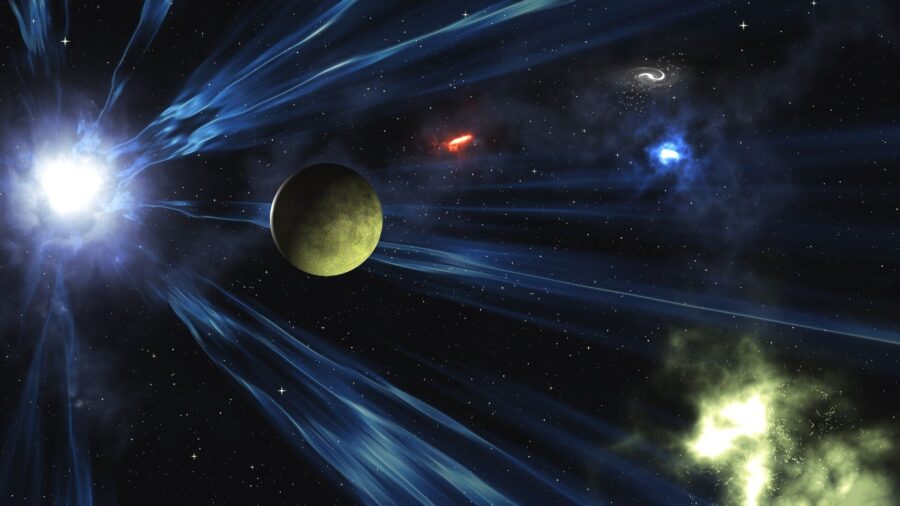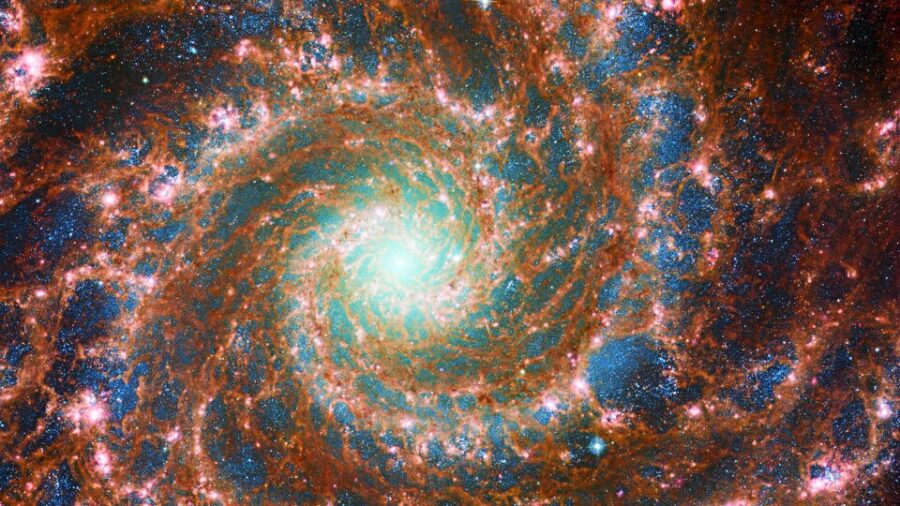Six Enormous Galaxies Detected By Astronomers And They Have Scientists Baffled
Six new galaxies have been discovered, and scientists are studying them to better understand the beginnings of our universe.
This article is more than 2 years old

Astronomers have detected six massive ancient galaxies using the James Webb Telescope. Their existence could upend current theories of cosmology as they date to a time when the universe was just 3 percent of its current age. They are also much larger than was presumed possible so early after the Big Bang. This suggests that humanity is missing a step in our understanding of the evolution of the universe.
“We’ve never observed galaxies of this colossal size, this early on after the Big Bang,” Ivo Labbé of Swinburne University of Technology in Australia said in a press release via Scimex. The astronomer, who led the international research effort, explained that the findings are more than 12 billion years old. They also reach sizes up to 100 billion times the mass of our sun.
“This is too big to even exist within current models,” Labbé added. The galaxies were spotted by James Webb Telescope during its first few months of operation, Science Alert reports. The powerful device is used to study the universe in infrared. This enables scientists to see light that traveled billions of years to reach us from the early universe.
While sifting through images, Doctor Erica Nelson of the University of Colorado Boulder spotted a series of fuzzy dots that appeared unusually bright and unusually red. In astronomy, redness is a proxy for age because as light travels across the expanding universe, it becomes stretched out or red-shifted, The Guardian reports.
“We looked into the very early Universe for the first time and had no idea what we were going to find,” Joel Leja of Pennsylvania State University explained. “It turns out we found something so unexpected it actually creates problems for science. It calls the whole picture of early galaxies formation into question,” he added via Science Alert.
Current cosmological models state that the beginning of the universe was nothing like it is now. The “hot soup of particles” that emerged after the Big Bang had to cool significantly to form atoms. This process would have filled the volume of space with hydrogen and helium. From this gas, the first stars and galaxies started to form around 150 million years later.
Evidence of this period has been difficult to obtain. But the timeline is supported by the evidence currently held by scientists. There are several reasons why the newly discovered galaxies pose a problem.

The first is that the density of matter within today’s largest galaxies vastly exceeds estimates for this period. Second, the density of normal matter is coming into tension with the amount of dark matter in the haloes of these galaxies, the research published in Nature states. Since the galaxies are so difficult to explain, the research team is searching their work for mistakes.
But for now, the data team’s interpretation of the find has remained constant.
While the structures look exactly like galaxies, they could be something else entirely, like a super-massive black hole that has never been seen before. Still, the amount of mass concentrated in one place remains difficult to explain during early periods of the Universe. Regardless of the object, a revision of the world’s understanding of space may be on the horizon.











